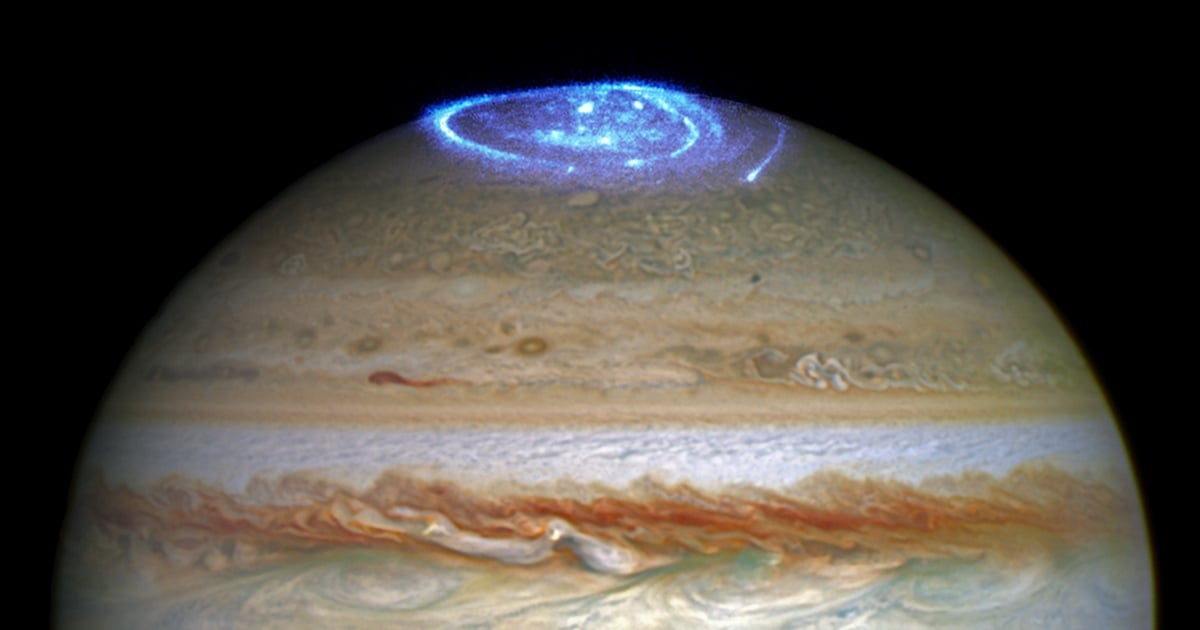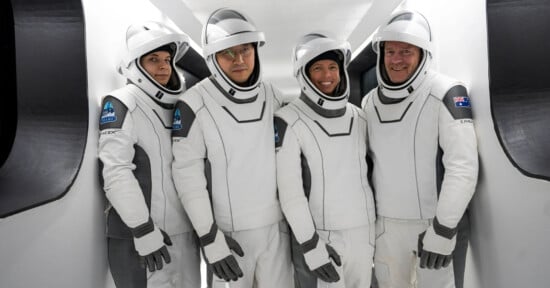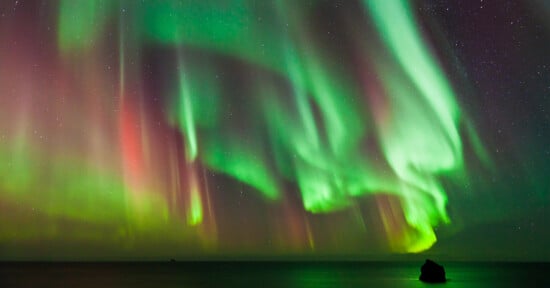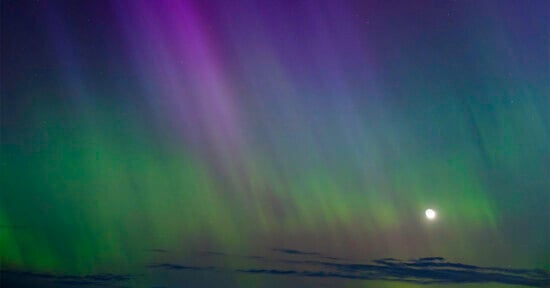3D Photos of Solar Wind Will Reveal More About What We See As Auroras
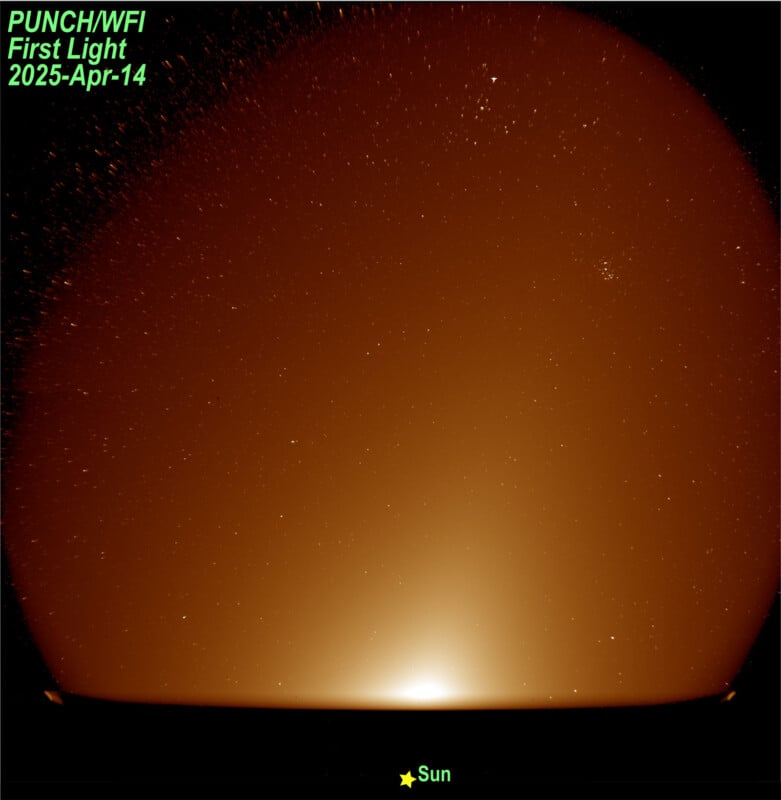
Polarimeter to Unify the Corona and Heliosphere, or PUNCH, is a spacecraft array that has sent its first photos back after its launch into polar orbit on March 11. The goal of the mission is to examine how solar corona transitions into solar wind, which is what is visible as auroras on Earth.
PUNCH isn’t one satellite, but rather a set of four suitcase-sized spacecraft that together create an 8,000-mile-wide space weather detector. Inside each is a space-rated, scientific-grade camera that will collect three RAW images through three different polarizing filters every four minutes.

The Southwest Research Institute says that this perspective will allow scientists to see the exact trajectory and speed of coronal mass ejections as they move through the inner solar system, which will improve on current coronographs which can only measure the corona itself, not the motion in three dimensions.
“The mission’s four small suitcase-sized spacecraft will act as a single virtual instrument 8,000 miles across to image the solar corona, the Sun’s outer atmosphere, as it transitions into the solar wind that fills and defines our solar system,” the Southwest Research Institute (SwRI) says.
“We opened the instrument doors on the Near Field Imager (NFI) and one Wide Field Imager (WFI) on April 14,” PUNCH Principal Investigator Dr. Craig DeForest of SwRI’s Solar System Science and Exploration Division located in Boulder, Colorado says. “On April 16, the other two WFIs opened their doors and collected their first-light demonstration images also. All four instruments are functioning as designed. We’re excited to finish on-orbit commissioning and get these cameras working together.”
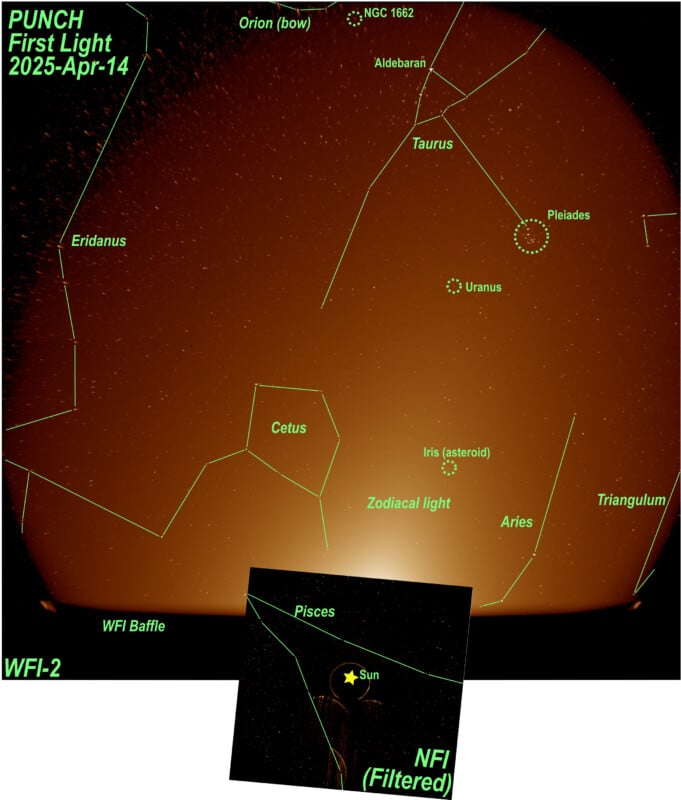
Solar wind streams out of the sun at over a million miles per hour and the particles are less than 0.1% as bright as the background stars of the Milky Way Galaxy. That means they’re difficult to see without specialized equipment. PUNCH raw images contain mostly stars and what is called “zodiacal light,” which is described as a haze of dust orbiting the sun and the inner solar system.
“Eliminating the starfield and the zodiacal light, while preserving the very faint solar wind signal, requires extraordinary care because the smallest artifact or miscalibration would swamp the solar wind signal,” SwRI explains.
The four-spacecraft array is in the midst of a 90-day commissioning period before the mission is set to begin in June and the SwRI’s Science Operations Center will begin processing the data to share with NASA and the rest of the world.
Image credits: Southwest Research Institute
